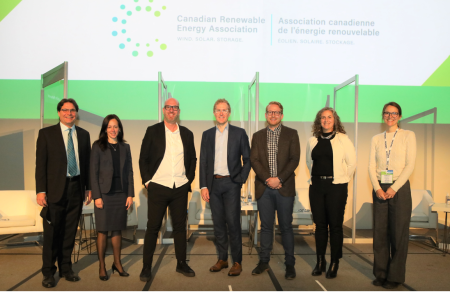
CanREA issues a call to action for electricity sector decision-makers
Maryam Farag
Industry Energy Manufacturing Canada CanREA Economy electricity energy manufacturer manufacturing Net-zero Solar Technology Wind
Photo: CanREA.
The Canadian Renewable Energy Association (CanREA) issued a call to Canada’s governments, utilities, regulators and electricity system operators, recommending five priority actions to accelerate the deployment of wind energy, solar energy and energy storage technologies in Canada.
“As Canada sets out on a transformative journey to reach net-zero GHG emissions by 2050, we need a powerful boost from wind energy, solar energy and energy storage,” said Robert Hornung, President and CEO, CanREA. “These technologies will play a central role in driving the rapid decarbonization and massive expansion of electricity production required to make net-zero a reality.”
CanREA’s 2050 Vision presents a scenario to support this net-zero target by relying on Canada’s abundant and low-cost wind and solar energy resources to supply two-thirds of the new electricity required by 2050. This requires an almost ten-fold expansion in this country’s wind and solar energy capacity in the next 29 years.
“We have no time to waste. Getting to net-zero by 2050 will require Canada to build out wind energy, solar energy and energy storage at an unprecedented scale and speed,” said Hornung. “Our industries are up to the challenge, but require clear signals from governments, increased collaboration among electricity sector decision-makers, and immediate actions to address existing barriers to this urgent deployment.”
CanREA’s 2050 Vision outlines five key tasks and 15 immediate actions required from governments, utilities, regulators and system operators to enable this pathway to net-zero. The key tasks on Canada’s to-do list include:
- Decarbonization of the electricity system by 2035,
- Modernization of electricity markets and regulatory structures,
- Diversification and expansion of procurement opportunities,
- Prioritization of efficient use and regional approaches to transmission infrastructure,
- Implementation of comprehensive strategies to support increased use of decarbonized electricity and green hydrogen.
